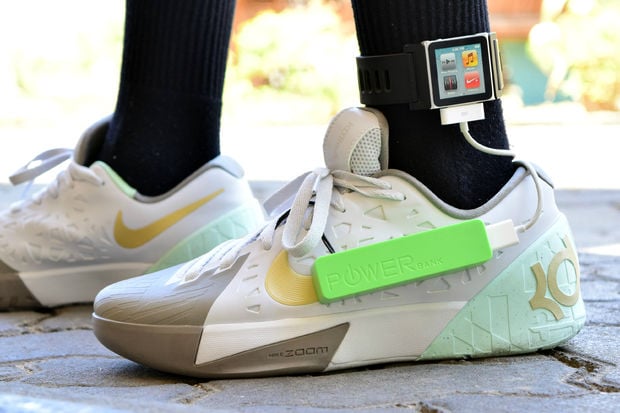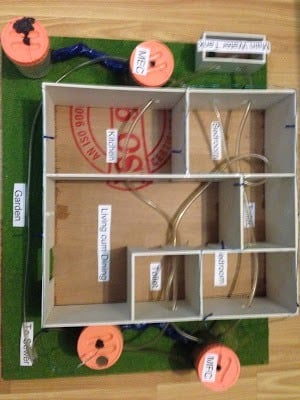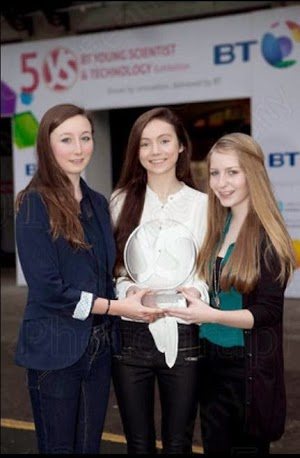Accident Detection and Location System
Rohan Chacko, 14, Soham Basu, 14, United Arab Emirates
The accident detection and location system is a small prototype that transmits information to emergency response units. By instantly communicating where an accident takes place, the response times for emergency vehicles are significantly reduced. This Google Science Fair device, and devices like it, stands to greatly improve emergency care around the world.
Electricity Harvesting Footwear
Angelo Casimiro, 16, The Philippines
This forward-thinking teen from the Philippines takes a new approach to capturing electricity at the Google Science Fair. The innovative device explores power-producing insoles for shoes. Devices like this one could potentially be implemented to reduce strain on city power grids, or even provide electricity in remote areas.
A Modular House to Initiate Efficient Usage of Resources
Dev Shaurya Singhal, 14, India
Another admirable teen from India created this incredible house design that is hugely energy efficient. This house makes use of MFC (Microbial Fuel Cell) and MEC (Microbial Electrolysis Cell) chips to produce electricity and treat wastewater. Not only does this give homeowners free resources, it could bring a powerful, practical way to reduce environmental impact to everyday people.
Technology for Processing Foliage Plastic Bottles and Wastepaper Into Paper
Aleksandr Orchenko, 14, Christina Ruzina, 14, Alexander Zakharov, 14, Russia
These three Russian youngsters found a way to produce medium-grade paper from recycled wastepaper, leaves, and plastic bottles. As the world struggles to slow deforestation, as well as absorb sky high numbers of discarded plastic bottles, this technology could offer serious solutions for a more sustainable future.
The Therenim: A Touchless Respiratory Monitor
Eswar Anandapadmanaban, 16, United States
This talented 16-year-old Google Science Fair competitor sought to solve the problem of invasive respiratory monitors. This new device monitors breathing without wires or electrodes. A device with the potential to simplify an obtrusive, yet necessary healthcare test, this project could change the healthcare industry for the better.
Utilization of Solar Energy by Making Solar Water Sprinkler
Sadineni Shashank, 14, India
This ingenious small sprinkler relies on solar energy to run. By creating a fully automated sprinkler that needs no outside power, this device will undoubtedly cut down on wasted energy, plus could improve agriculture in remote areas. Not only that, the sprinklers can run on battery power when it’s not sunny and automatically detect when your crops have enough water.
Intelligent Power Switching Device With an Energy Saving Protocol
Weitung Chen, 15, Taiwan
This innovative design improves the energy-saving protocol of consumer devices. By adding real-time polling technology, this Fair entry can save standby power and is fully automatic. Devices like this one could potentially greatly expand the battery life in our handheld technology, as well as devices in use in health and rescue industries.
Identification of Gravitationally Lensed Quasars
Pranav Sivakumar, 14, United States
This talented 14-year-old developed a new method to identify gravitationally lensed quasars. Quasars are deep space energetic objects that are crucial to our understanding of the universe. The lens distortion improves our ability to interpret the universe around us, and may lead to further discoveries in the study of the night sky. By using a unique algorithm, images of quasars can be compared to their neighbors to determine if we are cataloguing one star as two.
Breaking the Age Barrier
Mythri Ambatipudi, 13, United States
This brilliant 13-year-old discovered possible treatments for the chemical reactions that cause major life-threatening diseases. These diseases include atherosclerosis, cancer, Alzheimer’s and diabetic neuropathy, nephropathy and retinopathy, which are caused by advanced glycation end-products, or AGE reactions. By sourcing natural solutions that inhibit AGE formation, this teen may be on the path to revolutionizing medical science.
A Simple Method for Simultaneous Wastewater Treatment and Chemical Recovery Using Temperature and Pressure Changes
Andrew Ma, 17, United States
This Google Science Fair project from 17-year-old Andrew Ma seeks to make waste water treatment more affordable. This unique approach treats waste water but also recovers chemicals from the water. This new apparatus allows water purification inside your home, but also is a viable alternative to the energy-intensive synthesis of some chemicals.
Natural Bacteria Combating World Hunger
Ciara Judge, 16, Émer Hickey, 16, Sophie Healy-Thow, 16, Ireland
These three impressive youngsters from Ireland found that using a strain of bacteria helped certain crops to grow. The three girls studied the bacterium’s effect on wheat, oats, and barley, and found that treated crops germinated up to 50% faster. In barley, they increased the crop yield by 74%. Such a simple way to catapult the amount of food we can capture from each plant may eventually help fight hunger around the world. Additionally, this project identifies future ways we could reduce the use of harmful fertilizers.
Cleaning Up Oil Sands Waste
Hayley Todesco, 17, Canada
This impressive 17-year-old from Canada found a renewable and reliable way to reduce harmful waste in the Canadian oil sands. One of the larger sources of greenhouse gas emissions in the world, the Canadian oil sands constantly pollute the surrounding areas. By using newly designed sand filters, this science fair winner was 14 times more efficient in reducing acid concentrations and biofilm production than current cleanup methods. This could be hugely effective in keeping the environment clean at oil refinery sites around the world.
Fruit Fly Inspired Flying Robots
Mihir Garimella, 14, United States
Around the world, flying robots are currently used in a multitude of settings. Most of which require flying robots to respond to real-time threats. While current flying robots are bulky and somewhat ineffective, this outstanding 14-year-old from the United States designed a lightweight sensor module based on fruit flies’ visual system. He then created algorithms to mimic a fruit fly’s flying trajectory, enabling these robots to evade threats better than ever before.
Wearable Sensors for Aging Society
Kenneth Shinozuka, 15, United States
Another Google Science Fair winner invented a small, low-cost sensor to monitor aging patients in care homes and hospitals. The device causes an alert on a caregiver’s smart phone by sensing a patient’s shifting bodyweight. This coin-sized sensor relies on Bluetooth Low Energy and a companion app to make caregivers less stressed and more effective.
Converting Breath to Speech for the Disabled
Arsh Dilbagi, 16, India
The final winner of the Google Science Fair is Arsh Dilbagi for developing an augmentation and alternative communication device that translates breathing patterns into speech. The device has two modes, allowing patients to either spell or select phrases. Current devices letting people with developmental disabilities speak cost upwards of $1000, but this device can be produced for under US$100. Not only that, this device increases a patient’s speech rate by at least 300%.













